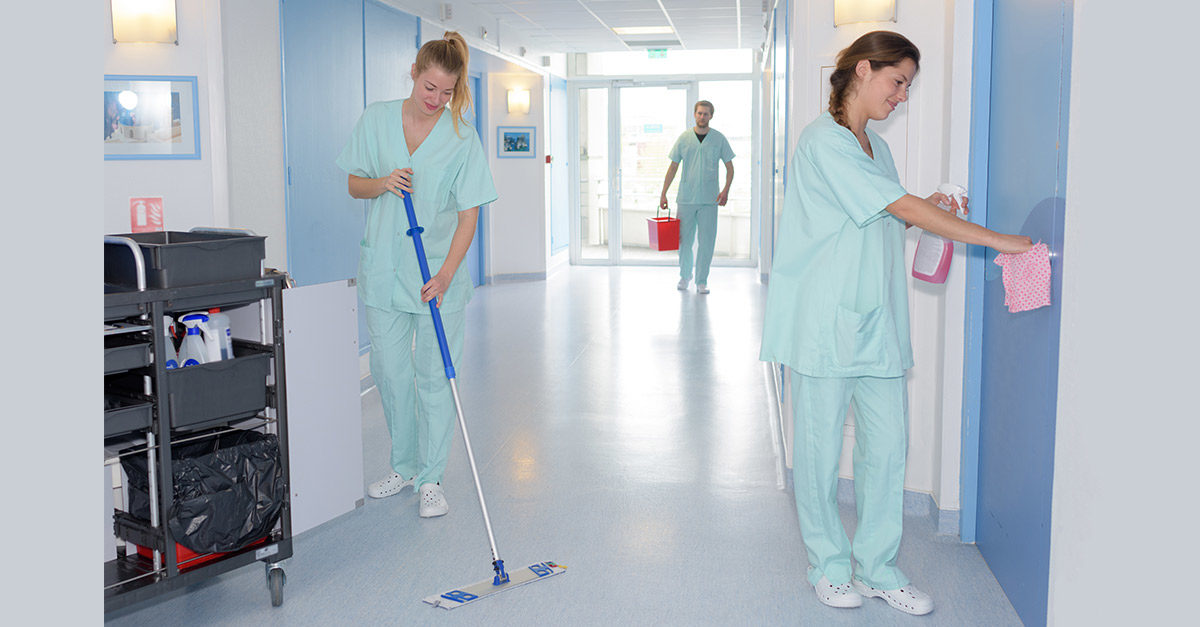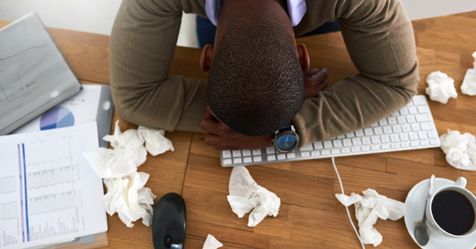Health care-associated infections (HAIs) sicken about 722,000 U. S. hospital patients each year and are responsible for approximately 75,000 deaths, according to a report from the U.S. Centers for Disease Control and Prevention. These infections are caused by bacteria and viruses such as C. difficile, MRSA, and E. coli that live on hospital floors and surfaces.
Thoroughly cleaning floors and surfaces in hospital patient rooms can help reduce the spread of these diseases. Aaron Jett, clinical solutions manager, Cintas Corp., advises cleaning crews on the proper cleaning equipment and methods to remove pathogens that cause HAIs.
Mop Up Germs
Microfiber mops work best in removing pathogens from surfaces. When mopping be sure to:
- Use dual-chamber mop buckets which separate clean and dirty water
- Use a clean mop for each patient room.
Choose the Right Solution
The best microfiber mop won’t remove germs if you’re not using the correct cleaning solution with it. Different cleaning and disinfecting solutions work best for different pathogens:
- High-level disinfectants include peracetic acid, bleach, and hydrogen peroxide blends. These solutions are the most effective against bacterial spores such as C. diff., one of the most difficult pathogens to kill.
- Intermediate level disinfectants include blends of quaternary ammonium compounds (quats) and alcohol. These solutions effectively kill mycobacteria that cause tuberculosis and nonlipid viruses such as norovirus.
- Low-level disinfectants include nonblended quats. They are most effective against vegetative bacteria like MRSA and lipid viruses that cause HIV.
Use Solutions Properly
Once you have chosen an effective disinfectant, make sure you’re applying it correctly.
- Consider chemical dispensing units, which dispense the correct cleaning solution dilution every time.
- Avoid using cotton mops or cloths with quats. Cotton is cellulosic and will deplete the efficacy of the solution.
- Read cleaning solution labels carefully to verify which pathogens they kill and check their dwell time.
Cover All the Zones
To eliminate pathogens cleaners must thoroughly clean and disinfect each zone in a hospital room. Each room has four zones:
- Restroom
- Countertops
- Floors
- High-touch spots, such as bed rails, call buttons, remotes, door knobs, and bedside tables.
Disinfecting high-touch surfaces in public areas surfaces also is crucial. Focus on cleaning elevator buttons, railings, door knobs, waiting areas, and cafeterias. Clean all surfaces people frequently touch with their hands.




